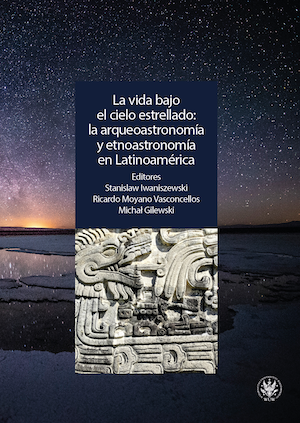LA IMPORTANCIA ARQUEOASTRONÓMICA Y CALENDÁRICA DE LOS INTERVALOS DE 63 Y 28 DÍAS EN MESOAMÉRICA
THE ARCHAEOASTRONOMICAL AND CALENDRICAL IMPORTANCE OF THE INTERVALS OF 63 AND 28 DAYS IN MESOAMERICA
Author(s): Hans Martz de la Vega, David Wood Cano
Subject(s): Anthropology, Archaeology, Cultural Anthropology / Ethnology
Published by: Wydawnictwa Uniwersytetu Warszawskiego
Keywords: tonalpohualli; zenith passage of the Sun; Sun over the nadir; trecenas; sevens
Summary/Abstract: Archaeoastronomical investigations (Franz Tichy, Anthony F. Aveni, Horst Hartung, Johanna Broda, Stanislaw Iwaniszewski, Vincent H. Malmström, J. Eric Thompson, Lucrecia Maupomé, Arturo Ponce de León, Jesús Galindo Trejo, Ivan Šprajc, Ismael Arturo Montero García, Rubén B. Morante) proved the importance of calendrical intervals in planning solar calendar alignments at prehispanic sites. The calendar intervals originate from the Mesoamerican system based on the numbers 13 and 20 and their multiplicities. These sacred numbers represented particular deities and astronomical-calendrical cycles inherent in the Mesoamerican worldview. The cycle of 260 days consists of 13 periods of 20 days or four periods of 65 days (called Cocijo in the Zapotec area) and five periods of 52 days. At the same time, the cycle of 52 days equals 13 x 4, the cycle of 65 days equals 5 x 13 days. Another critical cycle of 73 days constitutes a solar year of 73 x 5, and the Venusian cycle of 73 x 8 = 584 days. This paper proposes that the newly discovered cycle of 63 days forming a model of the Temple of Kukulkan at Chichen Itza (Montero García, Galindo Trejo and Wood Cano 2014) was also crucial in the Mexican Highlands. At Altiplano, this cycle was connected to harmonic periods of 91 days x 4 = 364. Thus, the cycle of 63 days may be understood as being composed of numbers 7 and 9. Numerous examples of 7 and 9-day periods are known from the evidence (Thompson 1943, Yasugi and Saito 1991). On the other hand, 63- and 28-day intervals make up 91 days, and both are divisible by 7. We argue that 63 + 28 days intervals were encoded in architecture. According to recent studies, these numbers are now integrated into the already previously studied and described for a better understanding of Mesoamerican calendrical structure. Archaeoastronomical measurements are families in various archaeological sites.
Book: La vida bajo el cielo estrellado: la arqueoastronomía y etnoastronomía en Latinoamérica
- Page Range: 171-181
- Page Count: 11
- Publication Year: 2021
- Language: Spanish, Portuguese
- Content File-PDF

